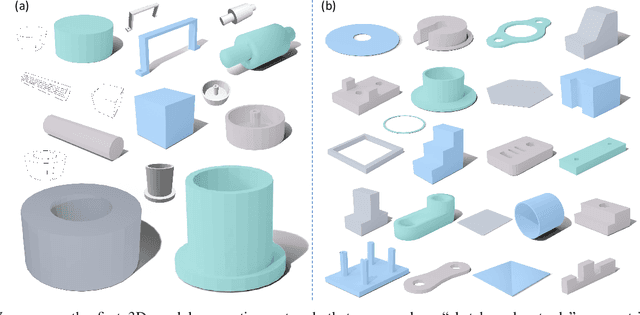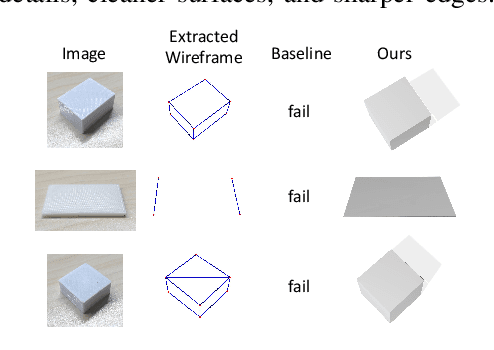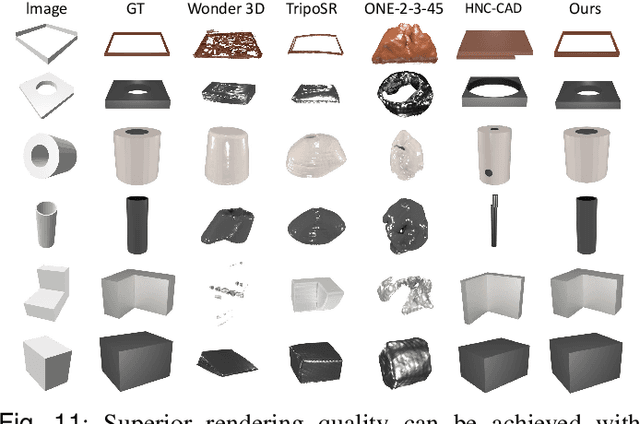Lanyun Zhu
SID: Multi-LLM Debate Driven by Self Signals
Oct 08, 2025Abstract:Large Language Models (LLMs) have exhibited impressive capabilities across diverse application domains. Recent work has explored Multi-LLM Agent Debate (MAD) as a way to enhance performance by enabling multiple LLMs to discuss and refine responses iteratively. Nevertheless, existing MAD methods predominantly focus on utilizing external structures, such as debate graphs, using LLM-as-a-Judge, while neglecting the application of self signals, such as token logits and attention, that arise during generation. This omission leads to redundant computation and potential performance degradation. In this paper, we shift the focus to the self signals of multi-LLM debate and introduce a Self-Signals Driven Multi-LLM Debate (SID), which leverages two types of self-signals: model-level confidence and token-level semantic focus, to adaptively guide the debate process. Our approach enables high-confidence agents to exit early at the model level and compress the redundant debate contents based on the attention mechanism. We evaluate our method on various LLMs and Multimodal LLMs across multiple challenging benchmarks. Experimental results demonstrate that our method not only outperforms existing MAD techniques in accuracy but also reduces token consumption, highlighting the effectiveness of utilizing self signals in enhancing both the performance and efficiency of multi-agent debate systems. Our code will be available at~\href{https://github.com/xuhang2019/SID}{\texttt{https://github.com/xuhang2019/SID}}.
Unlocking the Power of SAM 2 for Few-Shot Segmentation
May 21, 2025



Abstract:Few-Shot Segmentation (FSS) aims to learn class-agnostic segmentation on few classes to segment arbitrary classes, but at the risk of overfitting. To address this, some methods use the well-learned knowledge of foundation models (e.g., SAM) to simplify the learning process. Recently, SAM 2 has extended SAM by supporting video segmentation, whose class-agnostic matching ability is useful to FSS. A simple idea is to encode support foreground (FG) features as memory, with which query FG features are matched and fused. Unfortunately, the FG objects in different frames of SAM 2's video data are always the same identity, while those in FSS are different identities, i.e., the matching step is incompatible. Therefore, we design Pseudo Prompt Generator to encode pseudo query memory, matching with query features in a compatible way. However, the memories can never be as accurate as the real ones, i.e., they are likely to contain incomplete query FG, and some unexpected query background (BG) features, leading to wrong segmentation. Hence, we further design Iterative Memory Refinement to fuse more query FG features into the memory, and devise a Support-Calibrated Memory Attention to suppress the unexpected query BG features in memory. Extensive experiments have been conducted on PASCAL-5$^i$ and COCO-20$^i$ to validate the effectiveness of our design, e.g., the 1-shot mIoU can be 4.2% better than the best baseline.
From Air to Wear: Personalized 3D Digital Fashion with AR/VR Immersive 3D Sketching
May 15, 2025Abstract:In the era of immersive consumer electronics, such as AR/VR headsets and smart devices, people increasingly seek ways to express their identity through virtual fashion. However, existing 3D garment design tools remain inaccessible to everyday users due to steep technical barriers and limited data. In this work, we introduce a 3D sketch-driven 3D garment generation framework that empowers ordinary users - even those without design experience - to create high-quality digital clothing through simple 3D sketches in AR/VR environments. By combining a conditional diffusion model, a sketch encoder trained in a shared latent space, and an adaptive curriculum learning strategy, our system interprets imprecise, free-hand input and produces realistic, personalized garments. To address the scarcity of training data, we also introduce KO3DClothes, a new dataset of paired 3D garments and user-created sketches. Extensive experiments and user studies confirm that our method significantly outperforms existing baselines in both fidelity and usability, demonstrating its promise for democratized fashion design on next-generation consumer platforms.
POPEN: Preference-Based Optimization and Ensemble for LVLM-Based Reasoning Segmentation
Apr 01, 2025Abstract:Existing LVLM-based reasoning segmentation methods often suffer from imprecise segmentation results and hallucinations in their text responses. This paper introduces POPEN, a novel framework designed to address these issues and achieve improved results. POPEN includes a preference-based optimization method to finetune the LVLM, aligning it more closely with human preferences and thereby generating better text responses and segmentation results. Additionally, POPEN introduces a preference-based ensemble method for inference, which integrates multiple outputs from the LVLM using a preference-score-based attention mechanism for refinement. To better adapt to the segmentation task, we incorporate several task-specific designs in our POPEN framework, including a new approach for collecting segmentation preference data with a curriculum learning mechanism, and a novel preference optimization loss to refine the segmentation capability of the LVLM. Experiments demonstrate that our method achieves state-of-the-art performance in reasoning segmentation, exhibiting minimal hallucination in text responses and the highest segmentation accuracy compared to previous advanced methods like LISA and PixelLM. Project page is https://lanyunzhu.site/POPEN/
Breaking the Box: Enhancing Remote Sensing Image Segmentation with Freehand Sketches
Mar 15, 2025Abstract:This work advances zero-shot interactive segmentation for remote sensing imagery through three key contributions. First, we propose a novel sketch-based prompting method, enabling users to intuitively outline objects, surpassing traditional point or box prompts. Second, we introduce LTL-Sensing, the first dataset pairing human sketches with remote sensing imagery, setting a benchmark for future research. Third, we present LTL-Net, a model featuring a multi-input prompting transport module tailored for freehand sketches. Extensive experiments show our approach significantly improves segmentation accuracy and robustness over state-of-the-art methods like SAM, fostering more intuitive human-AI collaboration in remote sensing analysis and enhancing its applications.
Syllables to Scenes: Literary-Guided Free-Viewpoint 3D Scene Synthesis from Japanese Haiku
Feb 17, 2025Abstract:In the era of the metaverse, where immersive technologies redefine human experiences, translating abstract literary concepts into navigable 3D environments presents a fundamental challenge in preserving semantic and emotional fidelity. This research introduces HaikuVerse, a novel framework for transforming poetic abstraction into spatial representation, with Japanese Haiku serving as an ideal test case due to its sophisticated encapsulation of profound emotions and imagery within minimal text. While existing text-to-3D methods struggle with nuanced interpretations, we present a literary-guided approach that synergizes traditional poetry analysis with advanced generative technologies. Our framework centers on two key innovations: (1) Hierarchical Literary-Criticism Theory Grounded Parsing (H-LCTGP), which captures both explicit imagery and implicit emotional resonance through structured semantic decomposition, and (2) Progressive Dimensional Synthesis (PDS), a multi-stage pipeline that systematically transforms poetic elements into coherent 3D scenes through sequential diffusion processes, geometric optimization, and real-time enhancement. Extensive experiments demonstrate that HaikuVerse significantly outperforms conventional text-to-3D approaches in both literary fidelity and visual quality, establishing a new paradigm for preserving cultural heritage in immersive digital spaces. Project website at: https://syllables-to-scenes.github.io/
Let Human Sketches Help: Empowering Challenging Image Segmentation Task with Freehand Sketches
Jan 31, 2025



Abstract:Sketches, with their expressive potential, allow humans to convey the essence of an object through even a rough contour. For the first time, we harness this expressive potential to improve segmentation performance in challenging tasks like camouflaged object detection (COD). Our approach introduces an innovative sketch-guided interactive segmentation framework, allowing users to intuitively annotate objects with freehand sketches (drawing a rough contour of the object) instead of the traditional bounding boxes or points used in classic interactive segmentation models like SAM. We demonstrate that sketch input can significantly improve performance in existing iterative segmentation methods, outperforming text or bounding box annotations. Additionally, we introduce key modifications to network architectures and a novel sketch augmentation technique to fully harness the power of sketch input and further boost segmentation accuracy. Remarkably, our model' s output can be directly used to train other neural networks, achieving results comparable to pixel-by-pixel annotations--while reducing annotation time by up to 120 times, which shows great potential in democratizing the annotation process and enabling model training with less reliance on resource-intensive, laborious pixel-level annotations. We also present KOSCamo+, the first freehand sketch dataset for camouflaged object detection. The dataset, code, and the labeling tool will be open sourced.
Not Every Patch is Needed: Towards a More Efficient and Effective Backbone for Video-based Person Re-identification
Jan 28, 2025



Abstract:This paper proposes a new effective and efficient plug-and-play backbone for video-based person re-identification (ReID). Conventional video-based ReID methods typically use CNN or transformer backbones to extract deep features for every position in every sampled video frame. Here, we argue that this exhaustive feature extraction could be unnecessary, since we find that different frames in a ReID video often exhibit small differences and contain many similar regions due to the relatively slight movements of human beings. Inspired by this, a more selective, efficient paradigm is explored in this paper. Specifically, we introduce a patch selection mechanism to reduce computational cost by choosing only the crucial and non-repetitive patches for feature extraction. Additionally, we present a novel network structure that generates and utilizes pseudo frame global context to address the issue of incomplete views resulting from sparse inputs. By incorporating these new designs, our backbone can achieve both high performance and low computational cost. Extensive experiments on multiple datasets show that our approach reduces the computational cost by 74\% compared to ViT-B and 28\% compared to ResNet50, while the accuracy is on par with ViT-B and outperforms ResNet50 significantly.
Tree-of-Table: Unleashing the Power of LLMs for Enhanced Large-Scale Table Understanding
Nov 13, 2024Abstract:The ubiquity and value of tables as semi-structured data across various domains necessitate advanced methods for understanding their complexity and vast amounts of information. Despite the impressive capabilities of large language models (LLMs) in advancing the natural language understanding frontier, their application to large-scale tabular data presents significant challenges, specifically regarding table size and complex intricate relationships. Existing works have shown promise with small-scale tables but often flounder when tasked with the complex reasoning required by larger, interconnected tables found in real-world scenarios. To address this gap, we introduce "Tree-of-Table", a novel approach designed to enhance LLMs' reasoning capabilities over large and complex tables. Our method employs Table Condensation and Decomposition to distill and reorganize relevant data into a manageable format, followed by the construction of a hierarchical Table-Tree that facilitates tree-structured reasoning. Through a meticulous Table-Tree Execution process, we systematically unravel the tree-structured reasoning chain to derive the solutions. Experiments across diverse datasets, including WikiTQ, TableFact, FeTaQA, and BIRD, demonstrate that Tree-of-Table sets a new benchmark with superior performance, showcasing remarkable efficiency and generalization capabilities in large-scale table reasoning.
Img2CAD: Conditioned 3D CAD Model Generation from Single Image with Structured Visual Geometry
Oct 04, 2024



Abstract:In this paper, we propose Img2CAD, the first approach to our knowledge that uses 2D image inputs to generate CAD models with editable parameters. Unlike existing AI methods for 3D model generation using text or image inputs often rely on mesh-based representations, which are incompatible with CAD tools and lack editability and fine control, Img2CAD enables seamless integration between AI-based 3D reconstruction and CAD software. We have identified an innovative intermediate representation called Structured Visual Geometry (SVG), characterized by vectorized wireframes extracted from objects. This representation significantly enhances the performance of generating conditioned CAD models. Additionally, we introduce two new datasets to further support research in this area: ABC-mono, the largest known dataset comprising over 200,000 3D CAD models with rendered images, and KOCAD, the first dataset featuring real-world captured objects alongside their ground truth CAD models, supporting further research in conditioned CAD model generation.
 Add to Chrome
Add to Chrome Add to Firefox
Add to Firefox Add to Edge
Add to Edge